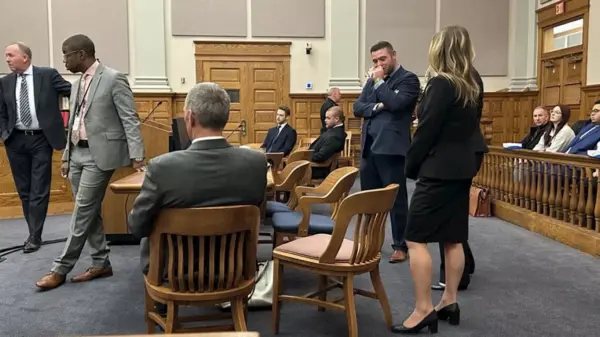The United Nations Office of the High Commissioner for Human Rights (OHCHR) has raised serious concerns regarding an alarming increase in enforced disappearances in Syria. During a press briefing on October 6, 2023, spokesperson Thameen Al-Keetan revealed that OHCHR has documented at least 97 new cases of abductions since the ousting of former president Bashar al-Assad, highlighting the ongoing human rights crisis in the region.
Al-Keetan emphasized that all armed actors, whether state or non-state, have a legal obligation to comply with international human rights and humanitarian laws. His remarks come nearly a year after the collapse of the previous regime, yet reports of abductions and disappearances continue to surface, adding to the more than 100,000 individuals who have gone missing during the Assad administration, a figure substantiated by various UN reports, including those from the Independent International Commission of Inquiry on the Syrian Arab Republic.
Historical Context of Enforced Disappearances
The ongoing civil war in Syria, now spanning over 14 years, has seen two distinct phases: the era of the former government and the current transitional authority. Both periods are characterized by the troubling practice of enforced disappearances. In response to this ongoing crisis, the UN established the Independent Institution on Missing Persons in the Syrian Arab Republic (IIMP) through UN General Assembly Resolution 77/230 in June 2023.
Recent cases, such as the disappearance of Hamza Al-Amarin, a volunteer with the Syria Civil Defense (commonly known as the White Helmets), underscore the urgency of this issue. Al-Amarin, who provided essential humanitarian services in conflict-affected areas, has become emblematic of the risks faced by humanitarian workers in Syria. Al-Keetan reiterated that humanitarian workers must be respected and protected at all times, as stipulated by international law.
Legal Obligations and the Path to Justice
International humanitarian law explicitly protects humanitarian workers, as outlined in Article 18(2) of Additional Protocol II of the Geneva Conventions. Furthermore, enforced disappearances are intrinsically linked to the right to life, placing a dual obligation on both state and non-state actors to refrain from such actions. Additionally, states are required to take preventive measures and investigate incidents of enforced disappearance under positive human rights law.
In the context of transitional justice, the clarification of the fates of the disappeared remains a fundamental legal requirement. This is essential not only for accountability but also for achieving sustainable peace, as articulated in the UN’s Basic Principles and Guidelines on the Right to a Remedy and Reparation for Victims.
The OHCHR’s warnings serve as a crucial reminder of the ongoing human rights violations in Syria and the need for concerted international efforts to address the plight of the missing and to uphold the legal protections afforded to all individuals within the country.






































































